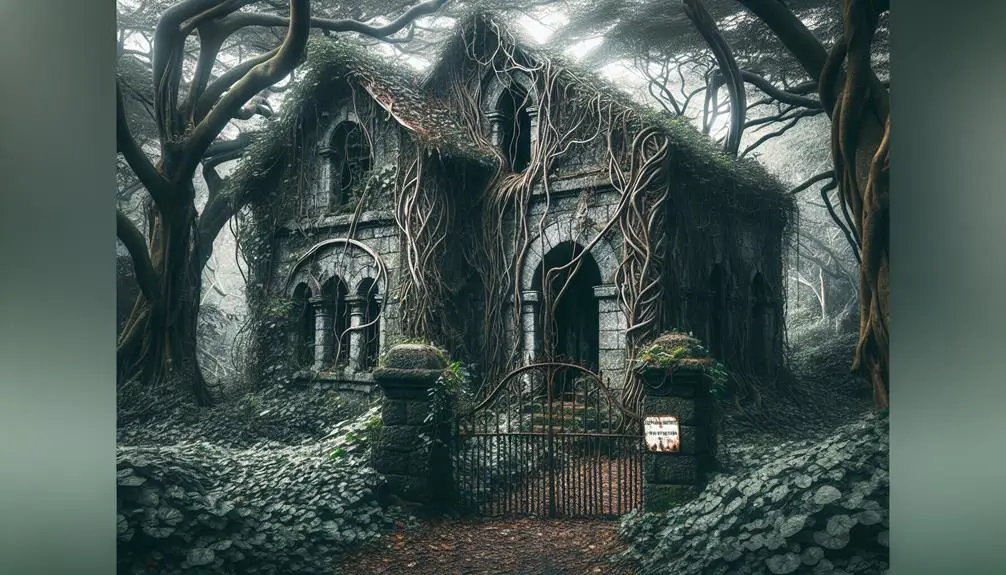To safeguard colonial ghost town remnants, meticulously document artifacts and map structures. Prioritize material conservation and seismic retrofitting for stability. Engage the community in education with workshops and volunteer programs. Balance tradition and innovation in restoration, seeking expert guidance. Manage finances sustainably through grants, partnerships, and fundraising events. These strategies guarantee long-term conservation success by combining historical documentation, structural stabilization, community engagement, conservation approaches, and sustainable management. This all-encompassing approach guarantees the protection and maintenance of these historical remnants for future generations.
Key Points
- Conduct thorough archival research and mapping for accurate documentation.
- Implement structural stabilization techniques to ensure safety and preservation.
- Engage the community through educational programs and volunteer opportunities.
- Utilize conservation methods balancing tradition and innovation for restoration.
- Secure sustainable funding through diverse strategies and stakeholder engagement.
Historical Documentation and Mapping
To effectively preserve colonial ghost town remnants, begin by meticulously documenting and mapping the historical artifacts and structures present in the area. Conducting thorough archival research and utilizing digital preservation methods are essential in capturing detailed records of the town's past. By delving into archives, you can uncover valuable information that sheds light on the town's history, helping to piece together its story.
Furthermore, engaging in archaeological surveys enables the identification and cataloging of physical remnants left behind. These surveys provide vital insights into the lifestyle, architecture, and activities of the town's former inhabitants. Coupled with geographic information systems, which allow for the spatial visualization of data, you can create detailed maps that showcase the distribution and layout of historical elements within the ghost town.
Structural Stabilization Techniques
Implementing advanced structural stabilization techniques is crucial for guaranteeing the long-term preservation of colonial ghost town remnants. To achieve this goal, consider the following key strategies:
- Conduct a thorough architectural assessment to understand the current state of the structures. This assessment will provide valuable insights into the specific stabilization needs of each building, guiding the preservation planning process effectively.
- Prioritize material conservation techniques to maintain the authenticity and integrity of the original structures. By carefully choosing appropriate materials and methods, you can make sure that the colonial ghost town remnants retain their historical significance for future generations to appreciate.
- Implement seismic retrofitting measures to reinforce the structures against potential earthquakes or other natural disasters. This proactive approach won't only protect the buildings from structural damage but also safeguard the safety of visitors and researchers exploring these historical sites.
Community Engagement and Education
Engage the local community in educational initiatives to foster a deeper appreciation for the historical significance of colonial ghost town remnants. Interactive workshops can be a vital tool to involve community members in hands-on learning experiences. These workshops could include activities like artifact preservation demonstrations or historical reenactments to bring the past to life. By actively participating in these workshops, individuals can gain a better understanding of the challenges faced by early settlers and the importance of preserving these remnants for future generations.
Additionally, volunteer programs can play an essential role in engaging the community and creating a sense of ownership over the preservation efforts. Encouraging locals to get involved in tasks such as site clean-ups, documentation, or fundraising events can instill a sense of pride and responsibility in safeguarding these historical sites. By actively involving the community in these preservation initiatives, a stronger sense of connection and commitment to protecting colonial ghost town remnants can be fostered.
Conservation and Restoration Approaches
In considering Conservation and Restoration Approaches for colonial ghost town remnants, prioritizing research on historical building techniques and materials is essential for informed preservation decisions. Understanding the traditional techniques used in construction during the colonial era allows for more authentic restoration efforts. Furthermore, integrating modern technologies can enhance the durability and longevity of the preserved structures while maintaining their original charm.
Here are three key points to think about when approaching conservation and restoration:
- Balancing Tradition and Innovation: Striking a balance between preserving the historical authenticity of the ghost town remnants and incorporating modern technologies for structural reinforcement is vital for sustainable conservation efforts.
- Expert Guidance: Seeking advice from experts in historical preservation, architecture, and engineering can provide valuable insights into the best practices for conserving colonial structures while leveraging modern advancements.
- Community Involvement: Engaging the local community in restoration projects fosters a sense of ownership and pride, ensuring the continued preservation and appreciation of the colonial heritage for future generations.
Sustainable Management and Funding
Sustainable management and funding for preserving colonial ghost town remnants require a strategic approach that integrates financial stability with long-term conservation goals. To guarantee long-term sustainability, implementing diverse funding strategies is essential. These may include seeking grants from heritage conservation organizations, establishing public-private partnerships, or organizing fundraising events within the community. By diversifying funding sources, you can mitigate financial risks and secure continued support for preservation efforts.
Effective management techniques are vital for overseeing the preservation of colonial ghost town remnants. Engaging stakeholders, such as local communities, historical societies, and governmental agencies, fosters a sense of shared responsibility and increases the likelihood of project success. Stakeholder involvement can also lead to valuable input, expertise, and resources that contribute to the preservation process.
Frequently Asked Questions
Are There Any Supernatural or Paranormal Occurrences Reported in These Colonial Ghost Towns?
You may encounter ghostly encounters and urban legends in colonial ghost towns. Reports of spiritual energies and haunted history add to the allure. Explore these mysterious tales and feel the chilling presence of the past.
How Do Local Indigenous Communities Feel About the Preservation of These Colonial Remnants?
Considering the preservation of colonial remnants, local indigenous communities hold diverse cultural perspectives. Their engagement in preservation efforts is essential, recognizing historical significance. Understanding and respecting these views is pivotal for effective community collaboration.
Are There Any Plans to Develop These Ghost Towns Into Tourist Attractions or Historical Sites?
If you consider developing colonial ghost towns into tourist attractions or historical sites, weigh the economic benefits against preserving their cultural significance. Balancing preservation with development can honor history while boosting local economies.
What Measures Are Being Taken to Ensure the Safety and Security of Visitors to These Ghost Towns?
When ensuring visitor safety in colonial ghost towns, security measures like proper signage, regular patrols, and emergency response plans are essential. Community engagement can foster a sense of responsibility, but preservation challenges demand ongoing vigilance.
How Do Climate Change and Natural Disasters Impact the Preservation Efforts of Colonial Ghost Town Remnants?
Climate change and natural disasters pose significant challenges to preserving colonial ghost town remnants. Erosion accelerates, threatening historical sites. Preservation efforts must adapt to these impacts, utilizing innovative techniques and strategies to safeguard these valuable remnants for future generations.



